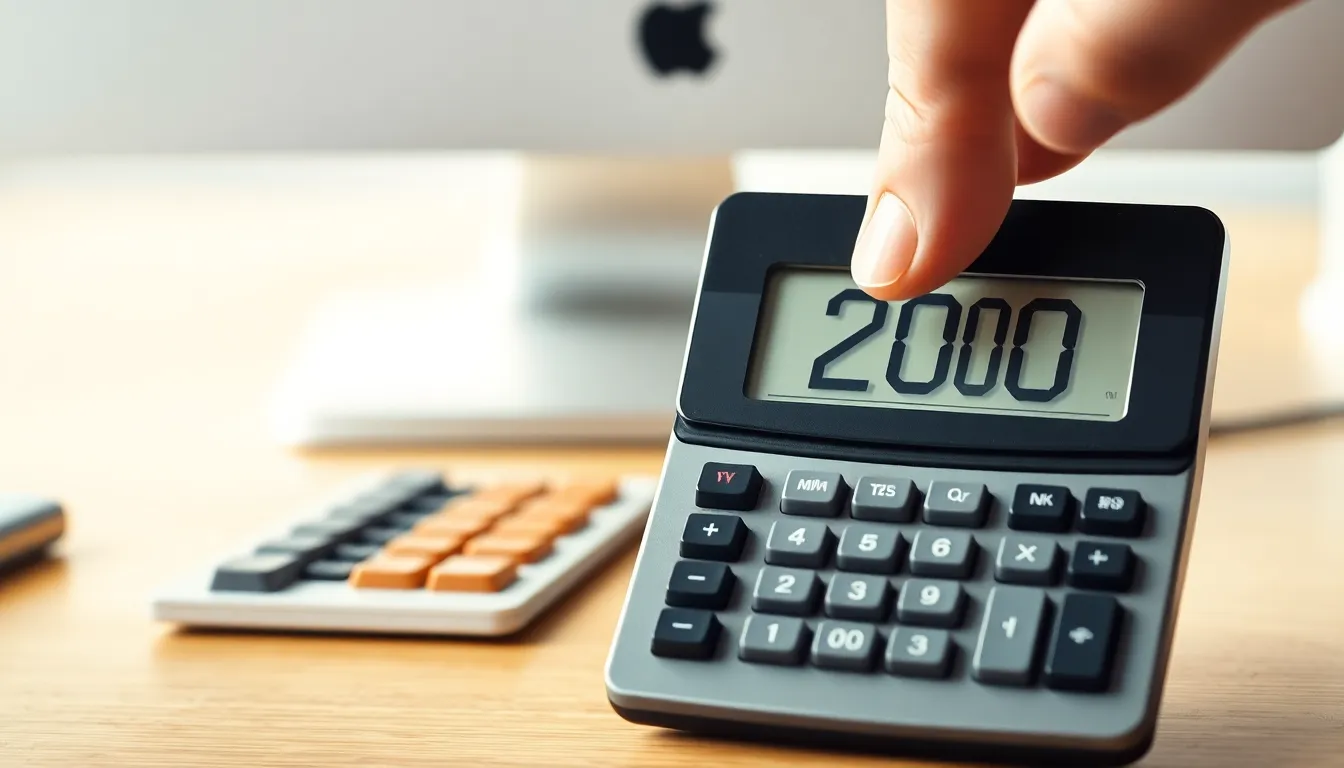Math can sometimes feel like a foreign language, especially when it comes to percentages. But fear not, because figuring out what 20% of 200 is easier than finding a cat video on the internet! In a world full of complex calculations, this simple math problem is a breath of fresh air.
Table of Contents
ToggleUnderstanding Percentages
Understanding percentages simplifies many everyday calculations. Grasping this concept makes tasks like calculating discounts or taxes straightforward.
Definition of Percentages
Percentages represent a fraction of 100. They express how much of a total is being considered. For example, 20% means 20 out of every 100 parts. This understanding helps in comparing quantities easily. Specific scenarios, such as determining grades or financial deals, often rely on calculating percentages. When discussing numbers, 50% indicates half while 25% shows a quarter. Hence, percentages provide a clear way to express proportions.
Importance of Knowing Percentages
Knowing percentages plays a crucial role in various fields. In finance, individuals use percentages to assess interest rates and investment returns. Students benefit by calculating grades or evaluating performance metrics. Health professionals apply percentages to understand statistical data, like hospitalization rates. In retail, percentages clarify discounts and sales pricing. For decision-making, comprehension of percentages informs consumers about benefits and risks associated with products or investments. Organizations utilize percentages to analyze market shares and trends.
Calculating 20% of 200

Calculating 20% of 200 focuses on a simple mathematical process. This percentage represents one-fifth of 200.
Step-by-Step Calculation
First, convert the percentage to a decimal. To do so, divide 20 by 100, resulting in 0.2. Next, multiply 200 by 0.2. The calculation yields 40. Thus, 20% of 200 equals 40.
Using a Calculator
Using a calculator streamlines the calculation process. Begin by inputting the number 200. Following this, multiply by 20. Finally, divide the result by 100 to get 40. This method quickly confirms that 20% of 200 equals 40. Calculators provide an efficient way to handle similar percentage calculations in various contexts.
Practical Applications
Calculating percentages plays a vital role in various real-life situations. Understanding these calculations significantly enhances daily decision-making and financial literacy.
Everyday Uses of Percentages
Consumers encounter percentages regularly. Discounts during sales often show specific percentages off, making it essential to understand how much they save. Employees also look at their performance metrics in terms of percentages, allowing for clear comparisons. Grading systems use percentages to evaluate academic performance, making it straightforward for students and parents to assess progress. Budgeting relies on knowing what percentage of income goes toward expenses, helping individuals manage their finances effectively.
Importance in Financial Decisions
In finance, percentages directly impact critical decisions. Interest rates on loans are expressed in percentage terms, affecting the total amount paid over time. Investors evaluate the percentage change in stock prices to determine potential gains or losses. Credit scores often rely heavily on various percentage factors, influencing loan approvals and interest rates. Understanding these percentages helps consumers choose the best credit cards and mortgages, ensuring informed financial choices. Knowing percentages empowers individuals to make better investments, leading to healthier financial futures.
Common Misconceptions
Misunderstandings about percentages often arise during calculations. Many individuals confuse finding percentages with more complex mathematical tasks. For example, determining 20% of a number is simply multiplying that number by its decimal equivalent, not a daunting challenge. This basic calculation plays a significant role in day-to-day activities like budgeting and shopping.
Confusion occurs when individuals mix percentages with other metrics. Percentages represent a portion of 100, while fractions describe parts of a whole. It’s crucial to clarify that while both express relationships, they do so differently. Percentages often make it easier to compare two values, such as sales discounts or interest rates. Recognizing these distinctions helps individuals apply mathematical concepts correctly in financial and academic situations.
Mastering the calculation of percentages like 20% of 200 not only simplifies everyday math but also enhances decision-making skills. With just a few simple steps anyone can confidently determine percentages and apply this knowledge in various real-life situations. Whether it’s figuring out discounts or understanding financial metrics the ability to calculate percentages is invaluable.
By demystifying the process and recognizing its importance in daily life individuals can approach math with newfound confidence. This understanding empowers them to make informed choices whether in personal finance education or professional settings. Embracing this skill leads to greater financial literacy and better outcomes in various aspects of life.





